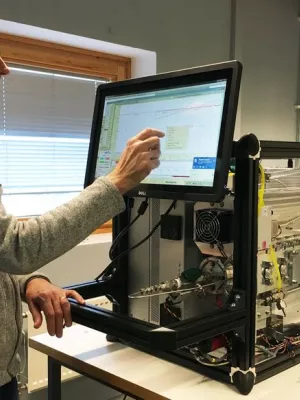
Erik Swietlicki
Professor

Comparison of MODIS and VIIRS cloud properties with ARM ground-based observations over Finland
Author
Summary, in English
Cloud retrievals from the Moderate Resolution Imaging Spectroradiometer (MODIS) instruments aboard the satellites Terra and Aqua and the Visible Infrared Imaging Radiometer Suite (VIIRS) instrument aboard the Suomi-NPP satellite are evaluated using a combination of ground-based instruments providing vertical profiles of clouds. The ground-based measurements are obtained from the Atmospheric Radiation Measurement (ARM) programme mobile facility, which was deployed in Hyytiälä, Finland, between February and September 2014 for the Biogenic Aerosols-Effects on Clouds and Climate (BAECC) campaign. The satellite cloud parameters cloud top height (CTH) and liquid water path (LWP) are compared with ground-based CTH obtained from a cloud mask created using lidar and radar data and LWP acquired from a multi-channel microwave radiometer. Clouds from all altitudes in the atmosphere are investigated. The clouds are diagnosed as single or multiple layer using the ground-based cloud mask. For single-layer clouds, satellites overestimated CTH by 326 m (14 %) on average. When including multilayer clouds, satellites underestimated CTH by on average 169 m (5.8 %). MODIS collection 6 overestimated LWP by on average 13 g mg-2 (11 %). Interestingly, LWP for MODIS collection 5.1 is slightly overestimated by Aqua (4.56 %) but is underestimated by Terra (14.3 %). This underestimation may be attributed to a known issue with a drift in the reflectance bands of the MODIS instrument on Terra. This evaluation indicates that the satellite cloud parameters selected show reasonable agreement with their ground-based counterparts over Finland, with minimal influence from the large solar zenith angle experienced by the satellites in this high-latitude location.
Department/s
- Nuclear physics
- MERGE: ModElling the Regional and Global Earth system
Publishing year
2016-07-21
Language
English
Pages
3193-3203
Publication/Series
Atmospheric Measurement Techniques
Volume
9
Issue
7
Document type
Journal article
Publisher
Copernicus GmbH
Topic
- Meteorology and Atmospheric Sciences
Status
Published
ISBN/ISSN/Other
- ISSN: 1867-1381